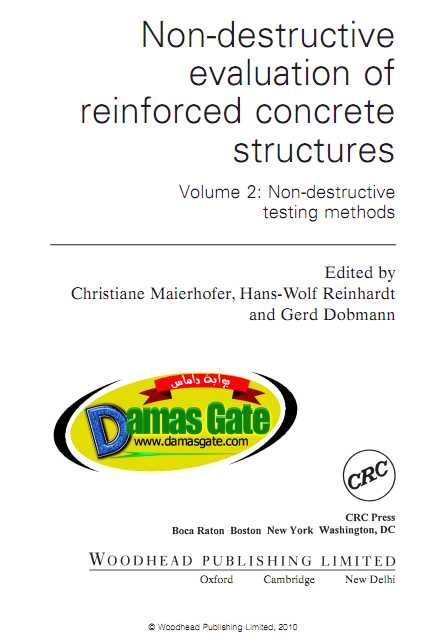Non-Destructive Evaluation of Reinforced Concrete Structures; Volume 2; Non-Destructive Testing Methods

Preface
The scientifi c and technological development of non-destructive testing (NDT) of materials is based on the interdisciplinary integration of a variety of different and complementary scientifi c and engineering methods. In addition to physics, material science is essential. The development of test systems requires additional handling technology and robotics, electronic hardware, computer science and software as well as mathematical algorithms for the numerical simulation.
The current state of research and development in the sub-disciplines determines which one takes over the leading role in systems engineering. In the past, the primary driver for NDT innovations came from physics. A signifi cant step forward was achieved by introducing new types of sensor principles, for example in digital industrial radiology and x-ray computer tomography, in low-frequency electromagnetic testing, and in thermography. New trends in development are the integration of system functions in miniaturized
digital circuits or by completely processing the inspection data on the software level, resulting in signifi cant power savings and higher system reliability.
More NDT applications are now possible in real time.
NDT methods are widely used in several industry branches. A variety of advanced NDT methods is available for metallic or composite materials. However, in civil engineering, NDT methods are still not established for regular inspections and worldwide only a few standardized procedures exist. Guidelines for NDT are currently applied only in special cases, mainly for damage assessment. In recent years, rapid, high-level progress was achieved in the development of technology, data analysis and reconstruction, automation and measurement strategies.
Much knowledge and experience were gained and data acquisition was simplified.
Therefore, the intention of this publication is to raise awareness within the civil engineering
community about the availability, applicability, performance reliability,
complexity and restrictions in understanding and application of NDT.
Download
http://s18.alxa.net/s18/srvs2/02/002...s.Volume.2.rar


